|
by Jade Alicandro Mace This time of year both the gardens and my kitchen start to get a little crazy with the sudden realization that the wheel of the seasons is turning. This is one herbal preparation I can't do without- Winter Immune Honey. Basically, I stroll through the garden and harvest what's in season and looks good! This season's batch included Echinacea flower, Calendula, Bee Balm, Blue Hyssop, St John’s Wort, and Tulsi. Just thinking about getting to curl-up with a nice spoonful of this in my tea mug makes the on-coming seasonal transition less ominous and- dare I say it?- even a tad-bit exciting.... Combine any combination of the following herbs, fresh (my preference) or dried. I’ve included some suggested percentages below (and of course many of these plants could go into both categories!). The idea here is to pull from the lists and make your own unique honey, based on your favorite herbs, what you have access to, and the specific herbal actions you’d like your honey to have. Your result will be a honey with a wide range of herbal actions, so you can effectively treat the vast array of winter ailments you might come across in the coming months. And remember- many of these herbs can be procured at your local grocery store or farmers market (especially the culinary herbs), and can tolerate some frost, often hanging on in the garden well into fall. A quick note about the herbal actions listed below: Aromatics are herbs that have a wonderful aroma because they are rich in essential oils (which tend to be anti-microbial). In my experience, aromatic herbs make the most delicious honeys! Anti-microbials and anti-virals are just what they sound like. Diaphoretics promote a healthy fever response which is part of your body’s immune strategy for fighting-off pathogens, as a higher body temperature can inhibit proliferation and reproduction of many viruses and bacteria. Lymphatics stimulate the lymphatic system, which is where many of our immune cells are born, and is also the primary transport system for immune cells to get to and from infections. Supporting the lymph means stimulating your body’s own vital force and flexing the proverbial “muscles” of the immune system, which is a good thing! The lymph fluid also transports waste products from fighting-off a pathogen, and the day-to-day metabolic waste from cellular metabolism to eliminatory organs as well. So, how do you make it? First choose your herbs… Lymphatic/Immune Stimulating Herbs- 50%
Aromatics/Anti-microbials/Anti-virals/Diaphoretics- 50% (mix-and-match)
Next, add the herbs to the honey! The process is so simple…..put your herbs into a dry glass jar, cover your herbs in raw honey (local if possible) and let sit for at least 2 weeks. If they are fresh they must be free of excess water from rain, dew, etc, and also chopped pretty fine, removing any woody or tough stems. Stir well so that all the plant material is evenly coated in the honey. Some will be poking-up from the top of the honey and that’s fine! As long as it’s coated in the honey it won’t mold. If you are making it with dried herbs, follow the same directions as above, only don’t worry about having to remove woody stems. To Use: I always make my honeys with fresh herbs. This is because I never strain my fresh herb honeys and prefer to use them with the plant material still in it. My favorite method is to mix a spoonful in hot water for instant tea or add to herbal tea at first sign of cold or flu. Then I eat the herbs at the bottom of my tea cup! You will find that honey does an amazing job of preserving the fresh herbs and there is still lots of medicinal activity and vibrancy to the plant material. So, I think you lose a lot of the medicine by straining it out. I can still taste the tingle from the Echinacea flowers when I eat a spoonful of the winter immune honey I made months and months ago! You can of course also eat this by the spoonful, spread on crackers or toast, and so on. The possibilities with herbal honeys are really endless! If you are using dried herbs, then it’s a different case and I find that those are better strained. Use your honey with wild abandon at first sign of sickness and have at least 3 tsp/day and much more is fine to take. You can also take during sickness to lessen duration and ease symptoms. Kids of course love this remedy as well! Enjoy and Happy Honey-Making! 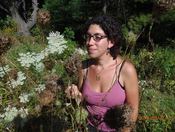 Jade Alicandro Mace is a community herbalist living in the rolling hills of western massachusetts. She has an herbal practice, runs a low-cost community herbal clinic, and teaches a class series and apprenticeship in bioregional herbalism. Learn more at www.milkandhoneyherbs.com, or follow her on facebook (Milk & Honey Herbs) and instagram (@milkandhoneyherbs) by Melanie Brown
A wealth of folklore, magic, and superstition is attached to this shrub-like tree, often described as a “complete medicine chest,” because of its extensive healing abilities on a wide variety of ailments. The most used species is Sambucus nigra, which grows throughout North America, Europe and many other parts of the world. Its history of medicinal use includes the entire plant in different preparations and dosages, such as the fresh leaf tincture as a reliable nervine. Today most commonly used are the fragrant white flowers that bloom in the spring and the ripe purple-black berries in the fall. The entire plant has shown to possess both anti-viral and anti-bacterial properties while also being a moderate immune system stimulant. by Patrice Green Fall is a time to traditionally hunt and harvest mushrooms, and an appropriate time to learn more about a specific group - the medicinal mushrooms. Specifically, let's take a closer look at Reishi and Chaga. 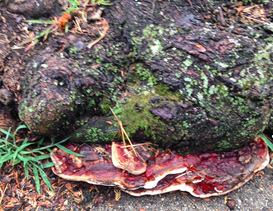 Reishi: (Red Reishi / Ganoderma lucidum / Ling Zhi) Known as the King of all medicinal mushrooms, Reishi is well known for its immune-enhancing properties. An herbal adaptogen, Reishi's goal is to restore the body to homeostasis. Safe to take daily over a long period of time, Reishi is one of the most revered herbs in Traditional Chinese Medicine, earning it the nickname The Mushroom of Immortality. Known to help balance the endocrine system, Reishi helps with thyroid disorders. A powerful Shen tonic, Reishi has a profound affect on the nervous system, calming the spirit and helping the mind to focus. Reishi grows on decaying trees, preferring maple. Not recommended for use in conjunction with chemotherapy or other treatments designed to reduce the immune system, Reishi is particularly suited to helping re-build the body, mind and spirit post-treatment. 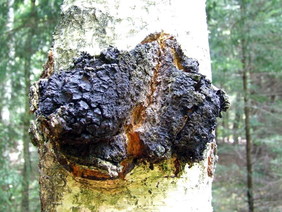 Chaga: (Inonotus obliquus) Chaga grows on birch trees and can be found in cold climates over most of the world. Long known as a folk remedy to the people of Siberia, Chaga is quite unique in its appearance, looking more like a chunk of tree bark than what one would normally think of as a mushroom. It is brown with blackened outer surface, much like charcoal or like it has been exposed to flames, but not completely burned. In other countries and cultures, Chaga is known as a powerful anti-tumor and anti-carcinogenic remedy, as well as a longevity tonic. Like Reishi, it is adaptogenic. Chaga is also a powerful anti-oxidant. In the human body there is a group of enzymes responsible for protection against free radicals and random oxidation called SuperOxide Dismutases, or SOD. As we age, our levels of SOD decrease. Chaga tea is known to stimulate our body's own production of SOD. Chaga and Turkey Tails in combination often offer relief to those undergoing cancer treatments. I was first introduced to the benefits of chaga when my mother was undergoing treatment for lung cancer. After vetting the herbs with the doctors at Dana Farber's Zakim Center, she began a daily habit of drinking three to four cups of chaga and turkey tails tea. Her doctors were amazed by how well she responded to treatment. Her tumor continued to progressively reduce until it disappeared. She did have a recurrence after stopping the tea for several months. However, she resumed her chaga regimen, in conjunction with acupuncture and has been cancer free for over 15 months. Recently my father, who has had pre-cancerous prostate issues for several years, went for a check up. He has also been enjoying the tea along with my mother. His physician was amazed that his PSA levels were normal for the first time in years. Is it the chaga? I don't know. I do know that my dad will be 90 in a few weeks and still has a spring in his step. Chaga normalizes blood pressure and cholesterol levels, optimizes the immune system, is both anit-inflammatory and anti-viral. A wonderful source of further information about this powerful medicinal mushroom can be found here. As always, consult your physician before taking any supplements. If you're interested in learning more about Reishi, Chaga and other medicinal mushrooms, I recommend reading anything written by the amazing Paul Stamets.
To help you continue your herbal education throughout the next few months we've compiled a list of upcoming herb classes being offered by our Herbstalk teachers over the fall months.
And what a list it is! Here you go... Lyme Disease Practitioner Training Sept. 9, Sept. 23, Oct. 7, Oct. 22, Nov. 4, Nov. 19; 6:30-9:30pm 4 Minebrook Rd. Lincoln, MA MORE INFO From the Roots Up: A Course in Bioregional Herbalism Fall Session: Sept. 13, Oct. 11, Nov. 1 Amherst/Northampton, MA Area MORE INFO Back to School: Herbal Support for Memory and Focus September 14th 2015 Vermont Center for Integrative Herbalism, 252 Main St. Montpelier, VT MORE INFO Everyday Immunity with Herbs September 16: 6:30 - 8pm Davis Square, Somerville, MA MORE INFO Herbs for Pregnancy and Birthworkers Wednesday, September 16th - 7:00pm CommonWealth Center for Holistic Herbalism MORE INFO Awakening the Spiritual Heart Intensive Sept. 16, Oct. 14, Nov. 11, Dec. 2 4 StonyBrook Rd., Arlington, MA MORE INFO Fall Wild Herb Day Sept. 20, 3:00-7:00 p.m. Littleton, MA (address provided upon registration) MORE INFO Herbs for Pets Wednesday, September 23rd - 7:00pm CommonWealth Center for Holistic Herbalism MORE INFO Book Signing/Reading:The Yin and Yang of Climate Crisis September 23, 7PM Phoenix Books, Burlington, VT MORE INFO Plant Walk and Herbal Tincturing Workshop Sept. 24, 9:45-12:00 Littleton Community Farm MORE INFO Aromatherapy Certification Course Sept. 26, Oct. 3, Nov. 7, Dec. 5; 10am-5pm 12 Pelham Terr., Arlington, MA MORE INFO Botanical Modulators for Female Endocrine Stress Relating to Infertility, Mood Disorder, and the Menopausal Transition September 26th 9 am – 1 pm Vermont Center for Integrative Herbalism, 252 Main St. Montpelier, VT MORE INFO Kimchi and Variations Sept. 29, 2:30-4:45 Free demonstration at the Farmers' Market in Westford, MA MORE INFO Herbal and Nourishing Broths Wednesday, September 30th - 7:00pm CommonWealth Center for Holistic Herbalism MORE INFO Herbstalk Gardens' Harvest Gathering October 4; 2 - 4pm Southwest Corridor Garden, Jamaica Plain, MA MORE INFO coming soon! Creating Teas from Medicinal Herbs Oct. 5; 1 - 3pm Wellesley Botanic Gardens, Wellesley, MA MORE INFO Herbs for Everyday Living: Fall Series Oct. 7, Oct. 14, Oct. 21, Oct. 28, Nov. 4; 6 - 8pm The Armory, Somerville, MA MORE INFO Herbal Support for the Post Partum Mom October 7th 2015 6-8 pm Vermont Center for Integrative Herbalism, 252 Main St. Montpelier, VT MORE INFO 10 Days of Real Food: A Clean Eating Group Program October 13th - October 22nd Online MORE INFO Book Signing/Reading:The Yin and Yang of Climate Crisis October 14, 6PM Shelburne Farm, Shelburne, VT MORE INFO Making Your Own Herbal Bitters & Cordials Oct 17th, 12-2:30pm Greenfield, MA MORE INFO Herbal Gifts Oct. 22; 7 - 8:30pm Massachusetts Horticultural Society, Wellesley, MA MORE INFO Intro to Herbal Infusions: Teas, Tinctures, Oils, Wines, and Syrups October 21st 2015 6-8 pm Vermont Center for Integrative Herbalism, 252 Main St. Montpelier, VT MORE INFO Herbal Gifts Oct. 22; 7 - 8:30pm Stevens-Coolidge Place, Andover, MA MORE INFO Talk on "Internal Climate Change" October 23, 4PM Connecting for Change/Bioneers Conference, New Bedford, MA MORE INFO Poses & Plants: A Yoga & Herbal Workshop October 24 Coolidge Corner Yoga, Brookline, MA MORE INFO Stayin’ Juicy: DIY Herbal Lubes for Health and Happiness Wednesday, October 28th 2015 6-8 pm Vermont Center for Integrative Herbalism, 252 Main St. Montpelier, VT MORE INFO Tammi Sweet: Stress, Relaxation, and the Heart Saturday, October 31 and Sunday, November 1, 2015 CommonWealth Center for Holistic Herbalism MORE INFO Quit Smoking with Herbs! Wednesday, November 4th 2015 6-8 pm Vermont Center for Integrative Herbalism, 252 Main St. Montpelier, VT MORE INFO Herbal Cordials and Wines Nov. 5; 7 - 8:30pm Mass. Hot Society, Wellesley, MA MORE INFO Herbal Ecology; Landscape As a Key to a Plant’s Character November 5, 6:30-9:30 p.m. $25 (Webinar) 12 Pelham Terrace, Arlington, MA MORE INFO Herbs for City Dwellers: The WELL Summit November 6-7 Boston, MA MORE INFO Herbs for Children and Picky Eaters Monday, November 9th 2015 6-8 pm Vermont Center for Integrative Herbalism, 252 Main St. Montpelier, VT MORE INFO Herbal Approaches to Autoimmune Disorders November 10th, 6:30-8pm Northampton, MA MORE INFO Fun With Ferments: Learn The Basics of Lacto Fermentation Wednesday, November 11th 2015 6-8 pm Vermont Center for Integrative Herbalism, 252 Main St. Montpelier, VT MORE INFO Mushrooms, Roots and Berries: Immune Stimulating Remedies for Winter Monday, November 16th 2015 6-8 pm Vermont Center for Integrative Herbalism, 252 Main St. Montpelier, VT MORE INFO Wintergreen Holiday Herbal Market! Nov. 28; 11am - 5pm The Armory, Somerville, MA MORE INFO Herbed Up! Winter Wellness from the Kitchen Monday, November 30th 2015 6-8 pm Vermont Center for Integrative Herbalism, 252 Main St. Montpelier, VT MORE INFO |
Archives
November 2023
Categories
All
|
Join the Newsletter!
Receive news about future Herbstalk events
Thank you!
You have successfully joined our subscriber list.
Copyright © Herbstalk 2024
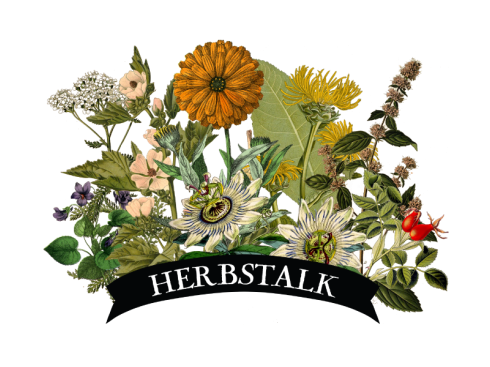
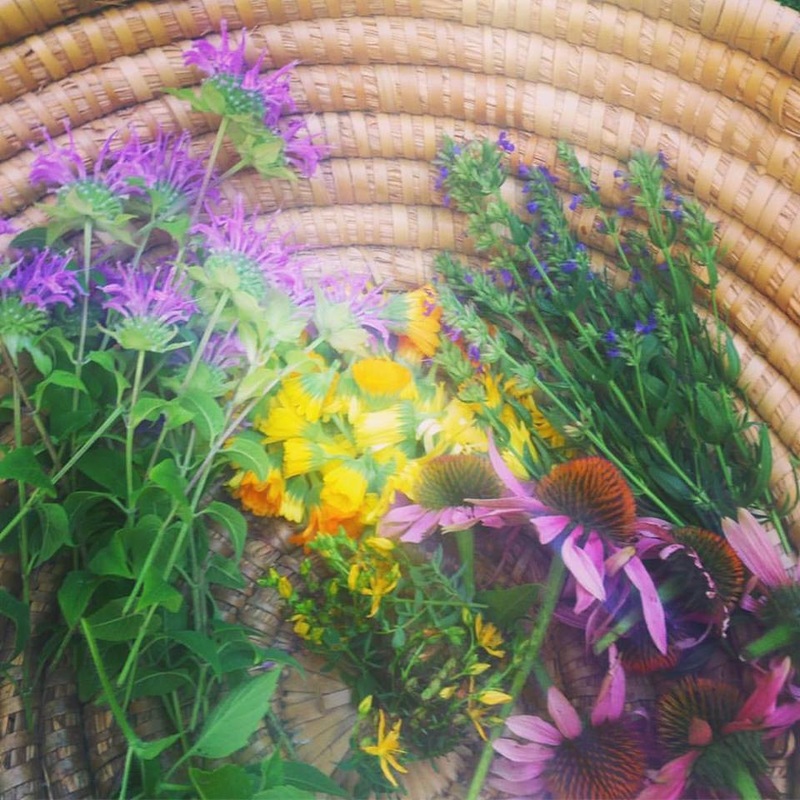
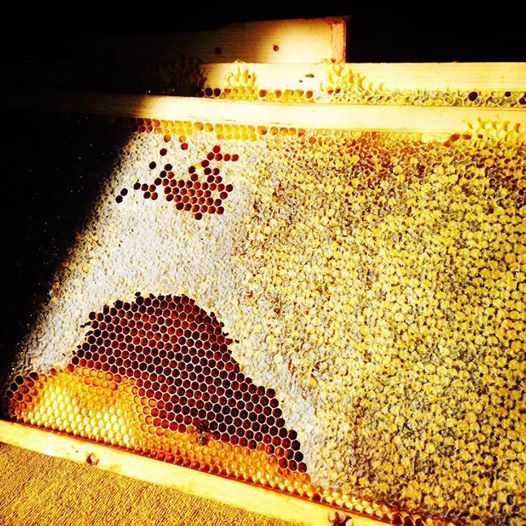
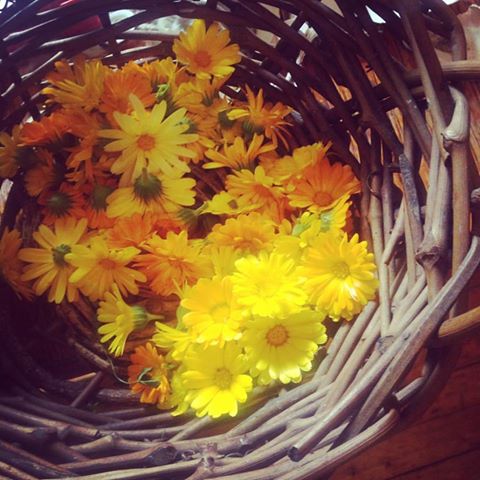
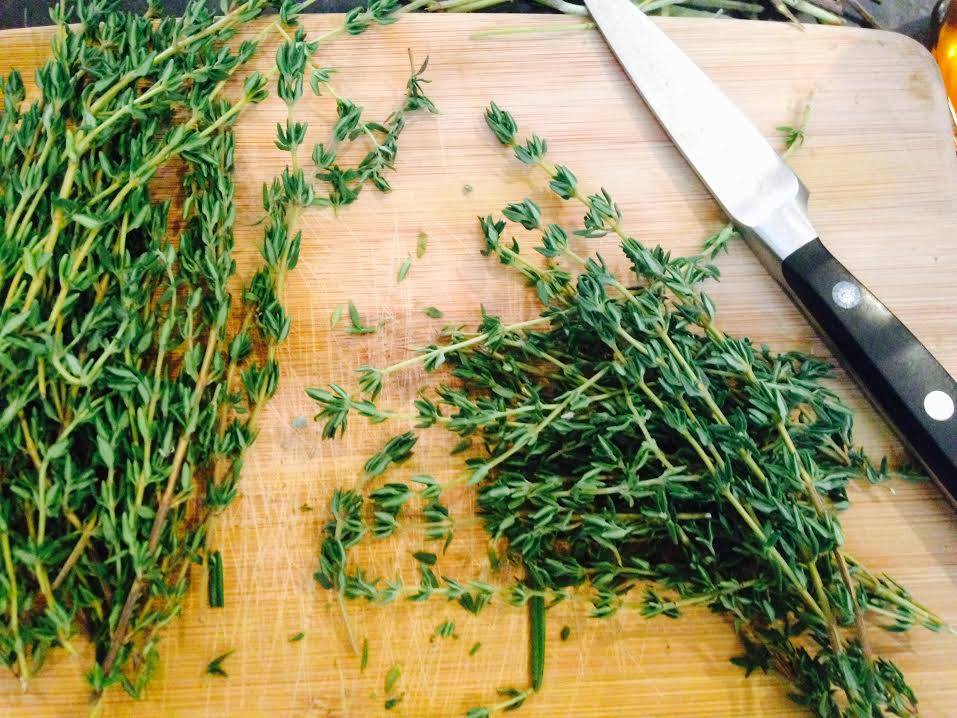
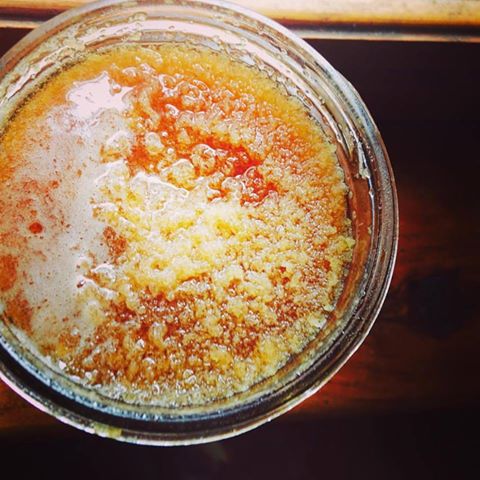
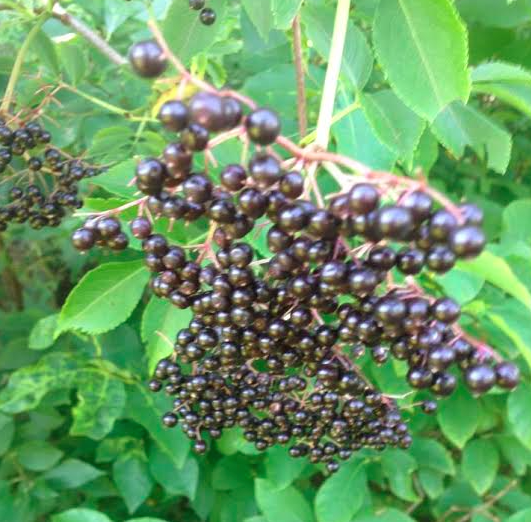

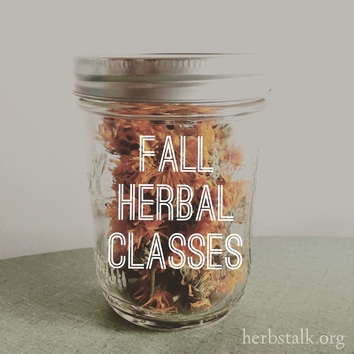
 RSS Feed
RSS Feed